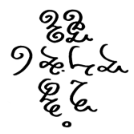Leaderboard
Popular Content
Showing content with the highest reputation on 11/09/2025 in all areas
-
But I invented the baromantic style. There's nothing wrong with that! I'm an innovator...2 points
-
Hi again @olivercomposer! I think with the way you're using the ornaments and little trills here and there, to me it sounds more Baroque now! LoL2 points
-
1 point
-
Hello my dear composers. Here my 3rd movement of my Piano sonata no 2. A Menuetto with Trio . I hope you like it1 point
-
I think it's a pretty good piece of music, so I'm satisfied with the result... 😄 It seems that blatantly copying someone's style is not my real superpower at all... Thanks again!1 point
-
In the beginning and throughout the piece you set a consistent mood, which for me makes it sound like VGM. But then the way you use rhythms and ornaments from 0:46 on makes it sound more Baroque to me.1 point
-
Anyway, jokes aside, maybe I’m just being ignorant, but lately I’ve been listening to a lot of Baroque music, and the trills in those pieces sounded more like groups of four sixteenths or thirty-seconds rather than triplets, the way I used them, or sometimes they had an even more intricate structure. But I could be wrong about that. To me, my piece doesn’t sound particularly Baroque, neither melodically nor harmonically. I actually feel it’s more Romantic than Baroque, though it’s true that it’s not really Chopin-like or Liszt-like either. Does it remind you of the Baroque style? Which part exactly? Thanks again!1 point
-
Fun motif, and interesting instrument choices. I like how you abruptly change the mood from fast, upbeat -> slow and dramatic. This is the same technique I use in my Mario musicals actually. I make Peach seem all innocent and sweet, then the next scene, BAM, I have her change her attitude. I feel that this technique adds a shock value for the listener or viewer. You are doing the same thing with your harmony and rhythms by abruptly shifting both, which keeps the music unpredictable. Even though your music is unpredictable with that regard, it's still well structured, and easy to follow.1 point
-
1 point
-
Hi there! Nice piece. Critique here. So anyways, make it more difficult and virtuostic. add fast octaves, fast runs, octave glissandos, octave grace notes. chords, and key changes. Don't miss out on tempo changes like in the following way either: Change to dominant with ritarlando, then faster tempo, something like tempo de marcia. Then you can in someway come back to this first theme, or do something else. It is fully your own choice. You could have a clear theme at the start like you had, and 'secretly' bringing the theme back in someway later. (e.g. left hand octaves with the theme while the right plays fast runs or fast arpeggios or something). Try using more contrasts, like from piano, to sforzando. Also, lastly, try avoiding the dominant at the very start. Try first developing the theme, and then going to the dominant. Anyways, good job, and keep on composing!1 point
-
Not in any great detail no. I do have a score somewhere that shows which passages were completed by Süssmayr. I always feel this is the most contrapuntal of Mozart's major works (not unlike his "Little Fugue"). Seems to me that Handel was a major influence. Some passages from his "Messiah" sound very similar to the Mozart/Süssmayr Requiem. I don't know any of Michael Haydn's works; but I'm sure you're right, and will take a listen.1 point
-
I rewrote the piece a bit, added some ornaments, tempo changes, and a few runs. I think this version feels more like it could’ve come from the Romantic era. What do you think?1 point
-
I rewrote the piece a bit, added some ornaments, tempo changes, and a few runs. I think this version feels more like it could’ve come from the Romantic era. What do you think?1 point
-
Hey Nicholas! I can’t remember if I posted on one of your pieces before, but I also compose marching/pep band pieces and I want to support that as much as I can since there are so few on this forum. Anyway, I think you have some great ideas. Wanting to start with a mellow intro, using different ostinatos and layering them in, entering percussion, then building to a big hit. I think all those ideas are nice. I also like that you had a cohesive vibe throughout the piece. It felt very Tron -esque, robotic and repetitive, and the synth helped that atmosphere. I hesitate to say this, because I think most often this isn’t the highest quality option, but here’s my opinion and taste and you can definitely disagree with me. I think you would write a higher quality piece if you delved into your theme a little more and started from scratch. I say this because sometimes the minimalist, repeated short bits actually come off as boring. My MB did a show that was “minimalist” my Senior year, and it also felt boring and repetitive to me. With your theme of infinity, I think you could easily delve into the idea of moving through time & space endlessly, but in a way there’s still change. Like not an infinity of just repetition (ex. carrying an ostinato throughout the whole piece), but an infinity where a motif is consistently repeated but differently, a canon. You may be able to keep the intro in an ethereal light still, because I think that kind of weightlessness also conveys infinity. Also, something that I hear even DCI writers struggling with is creating a piece that feels like a cohesive whole, including the big hits. The hits often feel not led up to properly, not exited in a fitting way, or they don’t match the overall style of the piece. See what you can do so the hits feel anticipated in some respect, and that they match the style, including tension and resolution. Cheers, and happy composing1 point
-
Thanks for your comment, it helped a lot! The roulades and fioraturas are good ideas!1 point
-
Hey @olivercomposer! Nice piano piece! I don't think it's very Chopinesque or Lisztian - but it certainly sounds like Oliver Kovacs! I think your chord progressions are very unique to you and to your by now well defined cinematic style of composing! If you wanted to make it more Chopinesque you could have included more rubato and long drawn-out roulades or fioraturas. Liszt's piano technique is also quite a bit more difficult. But I really enjoyed this piece of music! Thanks for sharing!1 point
-
Hey @MK_Piano! Great ideas so far! I think what I find confusing about the beginning of your main theme (after the short 4 measure introduction), is that at first it seems like you start the piece on an accompanimental one measure vamp in the strings. So the phrase actually seems to start on measure 6 in the Bassoons. That serves as the antecedent phrase of a musical period. It lasts for 4 measures from bar 6 - 10. That's just fine and dandy, but then the consequent phrase doesn't come in until measure 11 in the Bassoons once again. So it seems like you might be including that one measure vamp again as part of the phrase, in which case it becomes an acephalic five measure phrase. I know Haydn and even sometimes Mozart were known for writing five measure phrases. I am not sure if it is working here. If you are happy with it - definitely keep it! But to me it would sound better if you concatenated the phrasing so that the consequent phrase would start at bar 10. This confusion about the phrase lengths continues into the 2nd iteration of the phrase at measure 18. The phrase starts right on beat one, so this time its not acephalic. But then it continues for five measures from measures 18 - 23 with a slight 3/4 hemiola that's then concatenated to terminate on beat one of measure 23. To me this definitely starts to sound awkward and confusing in the phrasing. When I first listened to the piece without looking at the score, it sounded like you changed meter to 3/4 and then abruptly back to 4/4. I felt lost as a listener, not knowing where the phrase was going rhythmically. So although kinda awesome, the piece does have many structural flaws that confuse (at least this) listener. When the piano comes in on the theme later on in the piece (solo), you do concatenate the phrases to 4 measure phrases and I think that does kinda work better. But I think as far as the big form and macro-tonal plan is concerned, the piece seems to repeat too much. I think if you had included the contrasting 2nd theme in the exposition before doing a 2nd exposition with the piano that would have made more sense. But I have personally never written a piano concerto in sonata form before - I've just written two theme and variations pieces for piano and orchestra. So all my experience is in concertante type piano concerto writing. Thanks for sharing and I hope some of what I had to say was helpful/useful!1 point
-
Cool! Have you ever studied the manuscript to see how much of it Mozart actually wrote? Only movement fully orchestrated by Mozart was the first movement, the Introitus. He got about halfway (Hostias/Quam Olim) with only vocal parts, figured bass, and suggestions of first violin figurations. I love it, but prefer to call it the Mozart/Süssmayr Requiem! Highly influenced by Michael Haydn's Requiem, and that one and even Salieri's are worth a listen. Start here: I like Costas Court Composer; he basically writes Haydn symphonies that sound like Haydn, middlin' Haydn anyway. Nice guy, and when I asked if he were Joseph Haydn, or Michael, in a past life, he thought it was pretty funny...1 point
-
Among all the other previously published canons of its type, this one might as well have turned out to be the most demanding to perform, in no small part due to the choir's conventional maximum ranges being reached in at least three voices, including both soprano (C6) and bass (E2), making it no small feat to sing. The main lyrics would roughly translate from Latin to English as follows: "In the direst of circumstances the true heart of men shall sing with great hope of leaving behind a memorable life. Even death can conquer those whose memory lies in the glory of their good deeds." The coda, as per usual, reinforces the core message in a variety of ways. YouTube video link:1 point
-
This is how you do it. (finale expert in the house) You go to simple entry (which is the picture of the note on the left keypad). Then from the top menu, you will click "Simple". Click "Simple Entry Options..." UNCLICK "fill with rests at the end of measures". And, now you can write incomplete measures. Be careful, though, that you do not forget to put rests in where you DO need them at the end of measures. haha. Merry Christmas.1 point
-
0 points

.thumb.png.8b5b433a341551e913a34392660bc95b.png)

